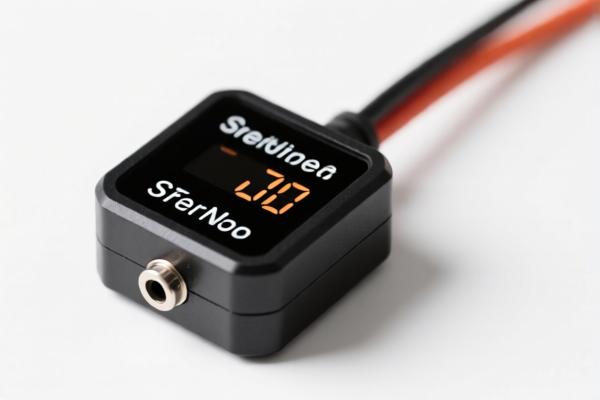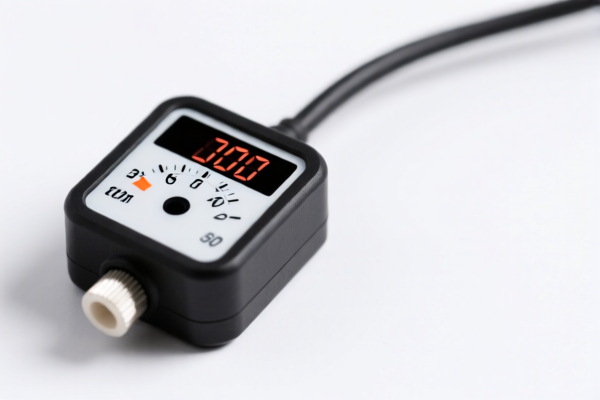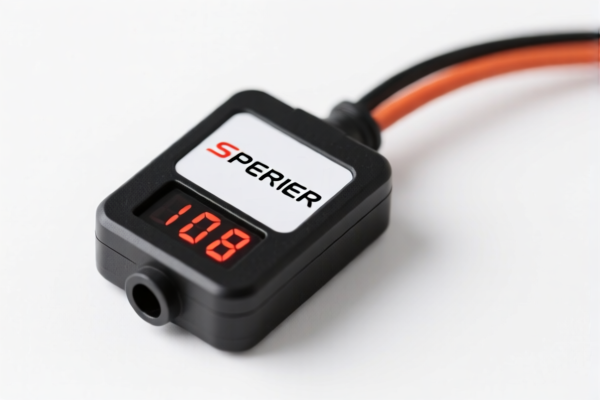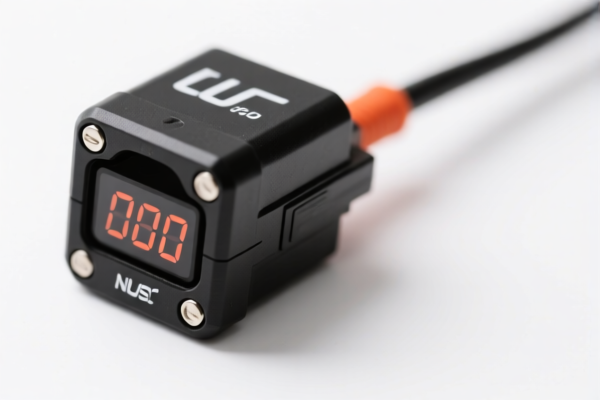| HS Code | Official Doc | Tariff Rate | Origin | Destination | Effective Date |
|---|---|---|---|---|---|
| 9029908040 | Doc | 55.0% | CN | US | 2025-05-12 |
| 9029204080 | Doc | 55.0% | CN | US | 2025-05-12 |
| 9029202000 | Doc | 61.0% | CN | US | 2025-05-12 |
| 9026804000 | Doc | 55.0% | CN | US | 2025-05-12 |
| 8541510000 | Doc | 70.0% | CN | US | 2025-05-12 |




Here is the structured classification and tariff information for the speed sensor product based on the provided HS codes and tax details:
🔍 HS Code Classification for Speed Sensor
1. HS CODE: 9029908040
- Description: Applicable for speed sensor housing, classified under revolution counters, production counters, taxi meters, odometers, pedometers, etc., and parts and accessories for tachometers and tachographs.
- Total Tax Rate: 55.0%
- Base Tariff: 0.0%
- Additional Tariff: 25.0%
- Special Tariff after April 11, 2025: 30.0%
- Note: This code is suitable for protective housings or components of speed sensors.
2. HS CODE: 9029204080
- Description: Applicable for speed sensor, classified under other instruments and devices.
- Total Tax Rate: 55.0%
- Base Tariff: 0.0%
- Additional Tariff: 25.0%
- Special Tariff after April 11, 2025: 30.0%
- Note: This code is suitable for general-purpose speed sensors used in various industrial or mechanical applications.
3. HS CODE: 9029202000
- Description: Applicable for bicycle speed sensor, classified under other instruments and devices.
- Total Tax Rate: 61.0%
- Base Tariff: 6.0%
- Additional Tariff: 25.0%
- Special Tariff after April 11, 2025: 30.0%
- Note: This code is specific to bicycle speed sensors and includes a 6% base tariff.
4. HS CODE: 9026804000
- Description: Applicable for wind speed sensor, classified under instruments for measuring or checking flow, level, pressure, or other variables of liquids or gases.
- Total Tax Rate: 55.0%
- Base Tariff: 0.0%
- Additional Tariff: 25.0%
- Special Tariff after April 11, 2025: 30.0%
- Note: This code is suitable for wind speed sensors or similar flow-measuring devices.
5. HS CODE: 8541510000
- Description: Applicable for acceleration semiconductor sensor, classified under semiconductor devices, including semiconductor-based transducers.
- Total Tax Rate: 70.0%
- Base Tariff: 0.0%
- Additional Tariff: 50.0%
- Special Tariff after April 11, 2025: 20.0%
- Note: This code is for semiconductor-based acceleration sensors, which may be used in speed sensors or other advanced applications.
⚠️ Important Notes and Recommendations
- April 11, 2025 Special Tariff: All the above HS codes will be subject to an additional 30% tariff after April 11, 2025. This is a time-sensitive policy and should be considered in your import planning.
- Anti-dumping duties: Not applicable for speed sensors in the provided HS codes.
- Material and Certification: Verify the material composition and unit price of the sensor to ensure correct classification. Some sensors may require certifications (e.g., CE, RoHS, FCC) depending on the end-use and country of import.
- Customs Declaration: Ensure that the product description and technical specifications match the HS code used for customs declaration to avoid delays or penalties.
✅ Proactive Advice
- Double-check the product type (e.g., bicycle, wind, semiconductor-based) to select the correct HS code.
- Consult with customs brokers or trade compliance experts if the product is complex or used in multiple applications.
- Monitor policy updates after April 11, 2025, as the special tariff may change or be extended.
Let me know if you need help determining the most appropriate HS code for your specific speed sensor model. Here is the structured classification and tariff information for the speed sensor product based on the provided HS codes and tax details:
🔍 HS Code Classification for Speed Sensor
1. HS CODE: 9029908040
- Description: Applicable for speed sensor housing, classified under revolution counters, production counters, taxi meters, odometers, pedometers, etc., and parts and accessories for tachometers and tachographs.
- Total Tax Rate: 55.0%
- Base Tariff: 0.0%
- Additional Tariff: 25.0%
- Special Tariff after April 11, 2025: 30.0%
- Note: This code is suitable for protective housings or components of speed sensors.
2. HS CODE: 9029204080
- Description: Applicable for speed sensor, classified under other instruments and devices.
- Total Tax Rate: 55.0%
- Base Tariff: 0.0%
- Additional Tariff: 25.0%
- Special Tariff after April 11, 2025: 30.0%
- Note: This code is suitable for general-purpose speed sensors used in various industrial or mechanical applications.
3. HS CODE: 9029202000
- Description: Applicable for bicycle speed sensor, classified under other instruments and devices.
- Total Tax Rate: 61.0%
- Base Tariff: 6.0%
- Additional Tariff: 25.0%
- Special Tariff after April 11, 2025: 30.0%
- Note: This code is specific to bicycle speed sensors and includes a 6% base tariff.
4. HS CODE: 9026804000
- Description: Applicable for wind speed sensor, classified under instruments for measuring or checking flow, level, pressure, or other variables of liquids or gases.
- Total Tax Rate: 55.0%
- Base Tariff: 0.0%
- Additional Tariff: 25.0%
- Special Tariff after April 11, 2025: 30.0%
- Note: This code is suitable for wind speed sensors or similar flow-measuring devices.
5. HS CODE: 8541510000
- Description: Applicable for acceleration semiconductor sensor, classified under semiconductor devices, including semiconductor-based transducers.
- Total Tax Rate: 70.0%
- Base Tariff: 0.0%
- Additional Tariff: 50.0%
- Special Tariff after April 11, 2025: 20.0%
- Note: This code is for semiconductor-based acceleration sensors, which may be used in speed sensors or other advanced applications.
⚠️ Important Notes and Recommendations
- April 11, 2025 Special Tariff: All the above HS codes will be subject to an additional 30% tariff after April 11, 2025. This is a time-sensitive policy and should be considered in your import planning.
- Anti-dumping duties: Not applicable for speed sensors in the provided HS codes.
- Material and Certification: Verify the material composition and unit price of the sensor to ensure correct classification. Some sensors may require certifications (e.g., CE, RoHS, FCC) depending on the end-use and country of import.
- Customs Declaration: Ensure that the product description and technical specifications match the HS code used for customs declaration to avoid delays or penalties.
✅ Proactive Advice
- Double-check the product type (e.g., bicycle, wind, semiconductor-based) to select the correct HS code.
- Consult with customs brokers or trade compliance experts if the product is complex or used in multiple applications.
- Monitor policy updates after April 11, 2025, as the special tariff may change or be extended.
Let me know if you need help determining the most appropriate HS code for your specific speed sensor model.
Customer Reviews
I was looking for a general-purpose speed sensor HS code, and 9029204080 was perfect. The 55% tariff and note about the 30% special tariff were very helpful for my planning.
The information was good, but I found it hard to navigate at first. It would have been better if the HS codes were categorized by product type more clearly.
I needed the HS code for a semiconductor-based acceleration sensor, and 8541510000 was exactly what I was looking for. The 70% rate was a bit high, but the note about the special tariff after April 11 was very useful.
The breakdown of the 55% tariff for wind speed sensors was helpful. I had to read it a few times, but it was worth the effort.
The page clearly explained the 61% tariff for bicycle speed sensors. I was looking for that specific HS code and this saved me a lot of time.